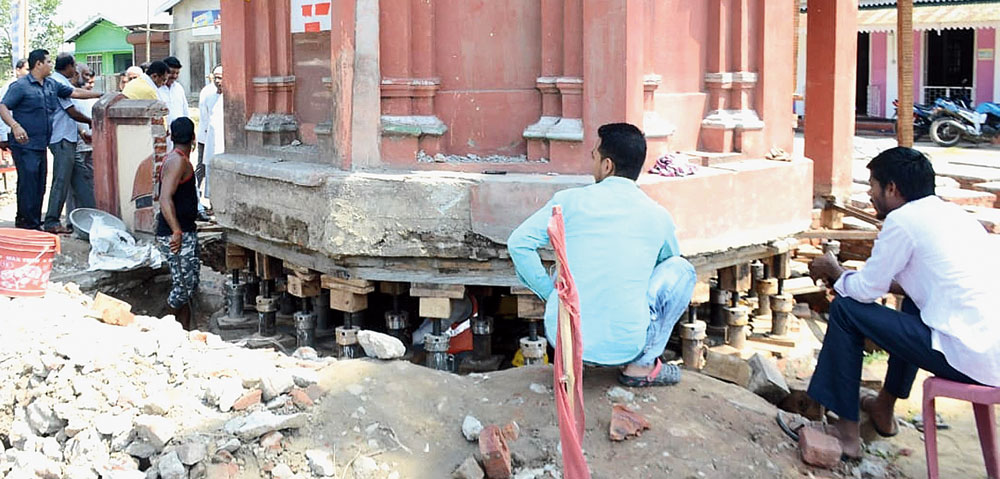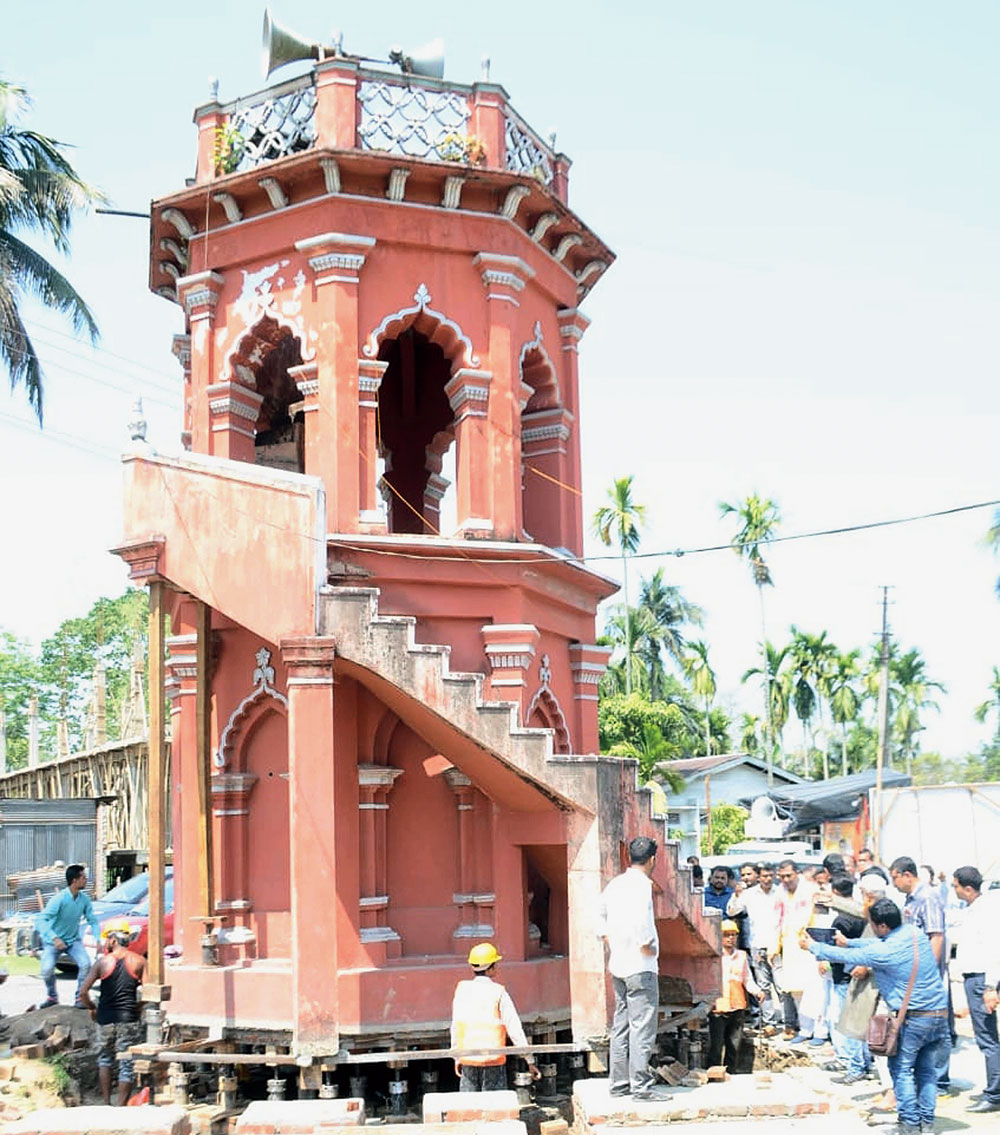A Haryana-based engineering firm, assisted by a civil engineer from Jorhat in Upper Assam, has been working for four days to shift the two-storeyed minaret of a historic mosque, without dismantling it, at Puranigudam in Assam’s Nagaon district.
The Haryana-based firm, RR and Sons, has completed 75 per cent of the work, which will be finished in the next few days.
The Puranigudam mosque, established in 1909, is one of the oldest mosques in central Assam and is known as a symbol of communal harmony.
The religious establishment that is situated along National Highway 37 had to be shifted after the government decided to go for four-laning of the highway.
The mosque has been dismantled.
A local organisation, Anjuma-e Islamiya, moved several groups in the areas for technical support to shift the minaret from its original site over the past couple of years.

Workers wait at the site Picture by UB Photos
“A Jorhat-based engineering group, Empirical Décor, headed by Wakil Ahmed, helped the Puranigudam villagers to find the engineering firm,” said a villager.
Puranigudam, 15km from the district headquarters here, is known for its communal harmony.
The area has three Muslim revenue villages and people living there maintain a close relationship with people of other religions and castes.
In 1909, one Sajidur Rahman backed the villagers to construct the mosque minaret on the site, using workers from Bangladesh.
“Instead of cement, a paste of rice, eggs, and a fish called borali maach in Assamese, was used, like that of the Rangghar in Sivasagar district. Bamboo was used instead of steel rods,” said Rahmat Ali, a villager.
“We are happy that the work has been successful. We hope the entire job will be complete without any damage to the structure. The total distance to be covered is 70 feet. Fifty feet have already been covered,” Ali said.










